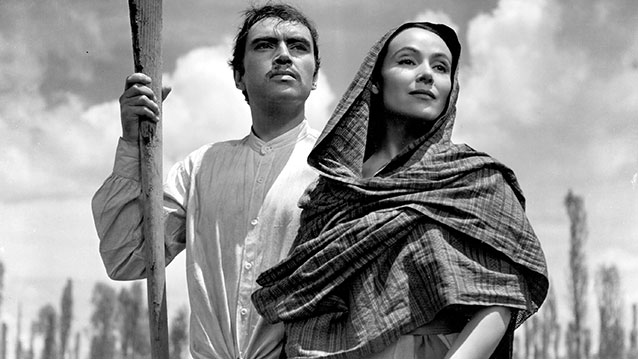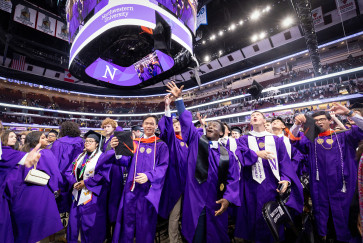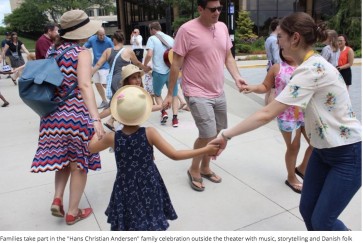EVANSTON, Ill. --- Block Cinema’s fall 2015 screenings of contemporary and classic films continue in November with several offerings that are part of the three-day Eyeworks Festival of Experimental Animation series, Nov. 5 through 7.
Presented by Northwestern University’s Mary and Leigh Block Museum of Art, other upcoming highlights include several films that were made during Mexican cinematographer Gabriel Figuero’s illustrious 50-year career.
Also scheduled is a screening of director Leslie Stevens’ 1960 film, “Private Property,” about a young woman who is victimized by two drifters. Stevens’ was an early forbearer of the “New Hollywood” movement, when a new generation of non-conformist filmmakers came into prominence in American cinema.
All of the following Block Cinema events will take place in the James B. Pick and Rosalyn M. Laudati Auditorium at the Block Museum of Art, 40 Arts Circle Drive, on Northwestern’s Evanston campus.
For more information, visit the Block Cinema website or phone 847-491-4000.
BLOCK CINEMA NOVEMBER 2015 FILM SERIES
• Eyeworks Festival of Experimental Animation series, Nov. 5 through Nov. 7. Founded in 2010, Eyeworks is an invitational festival focused on abstract animation and unconventional character animation. Concentrating on films made by individual artists, Eyeworks celebrates the enormous potential of the art of animation. This year’s festival features a historical tribute to Cecile Starr and Robert Russett’s influential book “Experimental Animation” (1976), a screening with visiting artist Takeshi Murata, and two programs of curated shorts from around the world.
• Tribute to Gabriel Figueroa series, Nov. 12 through Dec. 3. From the early 1930s through the 1980s, cinematographer Gabriel Figueroa (1907–1997) was instrumental in forging an evocative and enduring image of Mexico. Figueroa worked with leading directors from Mexico, the United States and Europe, traversing a wide variety of genres while maintaining his distinctive and vivid visual style. His precise attention to framing, dramatic use of light and shadow, and signature deep focus compositions are the work of a truly exceptional artist.
• There also will be a special Nov. 19 screening of director Leslie Stevens’ 1960 film, “Private Property,” about a woman who is victimized by a pair of drifters. The 35mm restored print, courtesy of the UCLA Film & Television Archive, will be introduced by the School of Communication’s Jeffrey Sconce, associate professor of radio, TV and film.
BLOCK CINEMA ADMISSION
Unless otherwise noted, general admission to Block Cinema is $6 for the general public or $4 for Northwestern faculty, staff and students, students from other schools with valid IDs and individuals 60 and older. Quarterly passes are $20. Tickets are available one hour before show time and space is limited. For more information, call the Block Cinema Hotline at 847-491-4000 or visit the Block Cinema website for a complete list of fall series descriptions and programs.
All of the following Block Cinema events will take place in the James B. Pick and Rosalyn M. Laudati Auditorium at the Block Museum of Art, 40 Arts Circle Drive, on Northwestern’s Evanston campus.
BLOCK CINEMA NOVEMBER 2015 SCREENINGS
• Eyeworks Festival, Tribute to Experimental Animation, 7 p.m. Thursday, Nov. 5 (16mm and 35mm, approximately 100 minutes.) Published in 1976, Robert Russett and Cecile Starr’s “Experimental Animation” was among the first texts to trace the trajectory of the kinetic art form by directly linking the abstract work of early pioneers to the technological breakthroughs of the 1960s and 70s. The book was a collaboration between Russett (1935-2015), an animator and scholar, and Starr (1921-2014), a critic, teacher and filmmaker, who combined their expertise of contemporary practices and early animation to compile this definitive volume. The program, curated by archivist John Klacsmann, highlights a selection of work featured in “Experimental Animation,” including films by Walter Ruttmann, Mary Ellen Bute, Paul Sharits, Harry Smith, Adam Beckett and Caroline Leaf. Archival prints courtesy of Academy Film Archive and Anthology Film Archives.
• Eyeworks Festival, “Melter: Films by Takeshi Murata,” 7 p.m. Friday, Nov. 6. Takeshi Murata’s work bridges the traditions of abstract psychedelic cinema with contemporary computer animation, glitch techniques and uncanny realism. His optically-seductive, culturally-critical, and consciousness-lacerating animation straddles both the worlds of contemporary art and experimental cinema. Murata’s films are challenging, weird, humorous, self-aware and impressively visionary. Visiting artist Takeshi Murata will introduce the film and participate in a post-screening Q&A. The program is sponsored by the department of art theory and practice as part of its Visiting Artist Program supported by The Myers Foundations.
• Eyeworks Festival, Shorts Program 1, 1 p.m. Saturday, Nov. 7 (running time approximately 70 minutes). The first of two shorts programs features various works, including a film from Robert Breer, who is considered to be the father of avant-garde animation in America, and a film from Jules Engel, who founded the influential Experimental Animation program at CalArts. This program is arranged in the Eyeworks Festival’s signature style, with classic and contemporary selections programmed together.
• Eyeworks Festival series, Shorts Program 2, 3 p.m. Saturday, Nov. 7 (approximately 70 minutes). This second program of short films includes a visionary computer animation from the 1970s by artist Ed Emshwiller and new work by contemporary animation star Yoriko Mizushiri, whose sensual and surrealist hand-drawn works have been audience favorites in previous festivals. The program features classic and contemporary works from around the world and includes both abstract and figurative animation.
• Tribute to Gabriel Figueroa series, “María Candelaria,” 7 p.m. Thursday, Nov. 12 (Emilio Fernández, 1943, Mexico, 35mm, 90 minutes). Emilio Fernández’s penchant for melodramatic excess is balanced by the aesthetic sensitivity of Figueroa’s cinematography in this tragic tale of two young lovers who struggle to overcome the cruelty of fate. The film’s titular protagonist is played by international star Dolores del Río who, after a successful career in Hollywood, returned to Mexico and became one of the most celebrated actors in the nation’s history. Set in 1909 on the eve of the Mexican revolution in Xochimilco, “María Candelaria” portrays the region’s indigenous population with a contradictory mix of romantic idealism and stereotypical exoticism.
• Tribute to Gabriel Figueroa series, “Enamorada,” 7 p.m. Friday, Nov. 13 (Emilio Fernandez, 1946, Mexico, 35mm, 99 minutes). Set in scenic Cholula, “Enamorada” tells the story of the city’s conquest by Mexican revolutionary General Reyes (Pedro Armendáriz) and his unlikely romance with Beatriz Peñafiel (María Félix), the fearless daughter of one of the most powerful and wealthy men in town. Loosely based on Shakespeare’s “The Taming of the Shrew,” Emilio Fernández’s sweeping historical melodrama is widely considered to be one of the most influential films of the “Golden Age” of Mexican cinema. María Félix’s captivating portrayal of the fiery Beatriz won her an Ariel Award for best actor in 1947 and solidified her status as one of the most iconic stars in the history of Latin American cinema.
• Special screening, “Private Property,” 7 p.m. Thursday, Nov. 19 (Leslie Stevens, 1960, United States, 35mm, 79 minutes). An early forbearer of the “New Hollywood” movement, “Private Property” concerns a young woman who becomes victim to a pair of drifters, Boots and Duke (played by cult favorites Warren Oates and Corey Allen, respectively). While the film’s frank presentation of sexual desire resulted in denial of MPAA approval and a limited release in the U.S., it was a hit in Europe. “Private Property” is a scruffy underdog of a movie and deserving of a reappraisal. The 35mm restored print is courtesy of the UCLA Film & Television Archive. Preservation funding was provided by The Film Foundation and the Hollywood Foreign Press Association. The screening will be introduced by the School of Communication faculty member Jeffrey Sconce, associate professor of radio/TV and film.
• Tribute to Gabriel Figueroa series, “Los olvidados,” 7 p.m. Friday, Nov. 20 (Luis Buñuel, 1950, Mexico, 35mm, 80 minutes.) The first of seven films Figueroa shot for Buñuel, “Los olvidados” shines a light on the slum life of Mexico City (though as the prologue suggests -- it could be set in any metropolis), following a gang of children who are driven to crime due to their circumstances. Unlike Buñuel’s best-known work, stylistically “Los olvidados” is nearly neo-realist aside from its beautiful surreal dream sequence.


